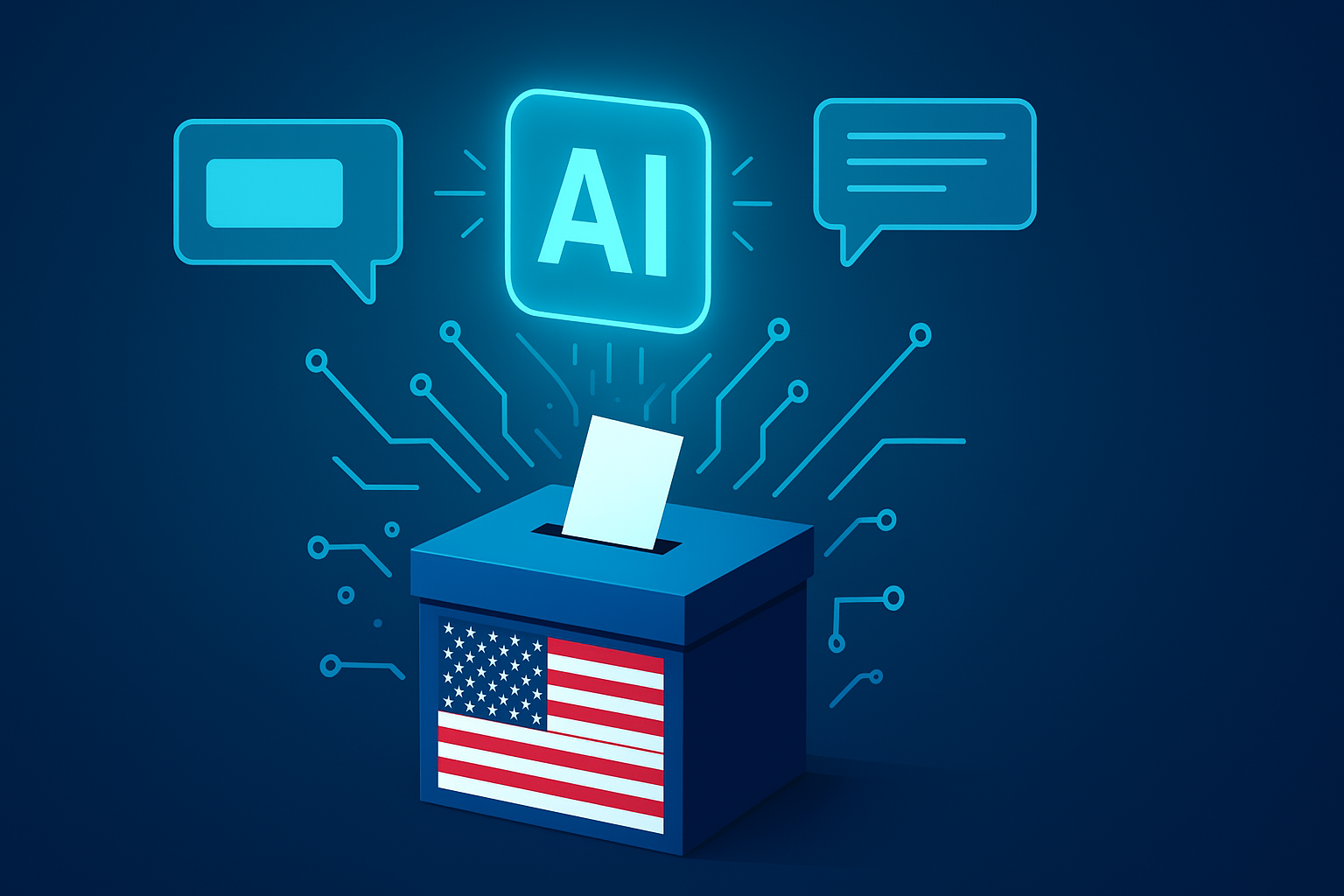🗳️ Introduction
As America heads toward the 2026 midterm elections and early campaign launches for 2028, artificial intelligence is playing a central role in U.S. politics. From personalized voter outreach to AI-generated political ads, the next election cycle may be the most AI-driven campaign in history.
🤖 AI in Political Campaigning
Political strategists are already adopting AI for:
-
Targeted Voter Ads – AI analyzes demographics and behavior to deliver personalized ads on TikTok, Instagram, and YouTube.
-
Chatbots for Voter Engagement – Virtual campaign reps answer questions about candidates’ policies 24/7.
-
Fundraising Optimization – AI predicts which supporters are most likely to donate and when.
-
Debate Prep – Candidates use GPT-like models to simulate rival arguments.
In other words, AI has become the digital campaign manager for U.S. politicians.
⚠️ The Dark Side – Deepfakes & Misinformation
The biggest concern? AI-powered misinformation.
-
Deepfake Videos – AI can create convincing fake clips of candidates.
-
Synthetic Audio – Fake speeches can be generated in a candidate’s voice.
-
Bots & Fake Accounts – Automated accounts amplify disinformation.
In 2024, the Federal Election Commission (FEC) began investigating AI-generated attack ads. By 2025, regulators are already pushing for stricter disclosure laws.
🇺🇸 How the U.S. Is Responding
The U.S. government is scrambling to regulate AI in politics:
-
Labeling Rules – Proposed laws would require disclaimers on AI-generated campaign content.
-
AI Misinformation Task Forces – Joint efforts between Big Tech and Washington to track fake content.
-
Transparency in Fundraising – Campaigns may need to disclose when AI tools are used in outreach.
Still, experts warn regulation may lag behind rapid AI adoption.
🧑🤝🧑 What This Means for American Voters
For voters, the AI election era brings both opportunities and risks:
✅ More Accessible Information – Chatbots and AI-driven summaries make politics easier to understand.
✅ Personalized Outreach – Campaigns can speak directly to voters’ concerns.
⚠️ Manipulation Risk – Hyper-targeted ads may polarize communities.
⚠️ Truth vs. Deepfakes – Voters will need stronger media literacy skills to separate fact from fiction.
🔮 The Future of Democracy in an AI World
By 2028, AI could become standard in every U.S. campaign, from local city councils to the White House. The future of American democracy will depend on balancing AI innovation with transparency and accountability.
